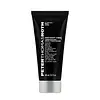What's inside
What's inside
 Key Ingredients
Key Ingredients

 Benefits
Benefits

 Concerns
Concerns

 Ingredients Side-by-side
Ingredients Side-by-side

Water
Skin ConditioningButylene Glycol
HumectantGlycerin
HumectantSodium Silicate
BufferingMagnesium Aluminum Silicate
AbsorbentSodium Magnesium Fluorosilicate
AbrasiveFoeniculum Vulgare Seed Extract
Skin ConditioningSymphytum Officinale Root Extract
Skin ConditioningPanthenol
Skin ConditioningTocopheryl Acetate
AntioxidantCarrageenan
Sodium Phytate
Potassium Sorbate
PreservativeSodium Benzoate
MaskingAscorbic Acid
AntioxidantPhenoxyethanol
PreservativeWater, Butylene Glycol, Glycerin, Sodium Silicate, Magnesium Aluminum Silicate, Sodium Magnesium Fluorosilicate, Foeniculum Vulgare Seed Extract, Symphytum Officinale Root Extract, Panthenol, Tocopheryl Acetate, Carrageenan, Sodium Phytate, Potassium Sorbate, Sodium Benzoate, Ascorbic Acid, Phenoxyethanol
Water
Skin ConditioningGlycerin
HumectantButylene Glycol
HumectantIsononyl Isononanoate
EmollientCitrus Aurantium Bergamia Fruit Water
Skin ConditioningDimethicone
EmollientButyrospermum Parkii Butter
Skin ConditioningCaprylic/Capric Triglyceride
MaskingGlyceryl Stearate
EmollientPolyglyceryl-6 Distearate
EmulsifyingCetearyl Alcohol
EmollientSorbitan Stearate
EmulsifyingIsostearyl Alcohol
EmollientMica
Cosmetic ColorantButylene Glycol Cocoate
EmulsifyingBacillus/Soybean Ferment Extract
Skin ConditioningDiamond Powder
AbrasiveNiacinamide
SmoothingSodium Hyaluronate
HumectantSodium Hydroxide
BufferingCitric Acid
BufferingGlutamic Acid
HumectantGlycine
BufferingHistidine
HumectantIsoleucine
Skin ConditioningLeucine
Skin ConditioningLysine
Skin ConditioningPhenylalanine
MaskingAlanine
MaskingArginine
MaskingProline
Skin ConditioningSerine
MaskingThreonine
Tyrosine
MaskingValine
MaskingSodium Phytate
Sodium Lactate
BufferingSilica
AbrasiveEthylcellulose
Potassium Sorbate
PreservativeSodium Benzoate
MaskingHydroxyethylcellulose
Emulsion StabilisingAspartic Acid
MaskingDisodium Phosphate
BufferingPolysorbate 60
EmulsifyingSodium Phosphate
BufferingPolysilicone-11
Titanium Dioxide
Cosmetic ColorantEthylhexylglycerin
Skin ConditioningDimethicone Crosspolymer
Emulsion StabilisingCarbomer
Emulsion StabilisingPolymethylsilsesquioxane
Iron Oxides
Phenoxyethanol
PreservativeWater, Glycerin, Butylene Glycol, Isononyl Isononanoate, Citrus Aurantium Bergamia Fruit Water, Dimethicone, Butyrospermum Parkii Butter, Caprylic/Capric Triglyceride, Glyceryl Stearate, Polyglyceryl-6 Distearate, Cetearyl Alcohol, Sorbitan Stearate, Isostearyl Alcohol, Mica, Butylene Glycol Cocoate, Bacillus/Soybean Ferment Extract, Diamond Powder, Niacinamide, Sodium Hyaluronate, Sodium Hydroxide, Citric Acid, Glutamic Acid, Glycine, Histidine, Isoleucine, Leucine, Lysine, Phenylalanine, Alanine, Arginine, Proline, Serine, Threonine, Tyrosine, Valine, Sodium Phytate, Sodium Lactate, Silica, Ethylcellulose, Potassium Sorbate, Sodium Benzoate, Hydroxyethylcellulose, Aspartic Acid, Disodium Phosphate, Polysorbate 60, Sodium Phosphate, Polysilicone-11, Titanium Dioxide, Ethylhexylglycerin, Dimethicone Crosspolymer, Carbomer, Polymethylsilsesquioxane, Iron Oxides, Phenoxyethanol
Ingredients Explained
These ingredients are found in both products.
Ingredients higher up in an ingredient list are typically present in a larger amount.
Butylene Glycol (or BG) is used within cosmetic products for a few different reasons:
Overall, Butylene Glycol is a safe and well-rounded ingredient that works well with other ingredients.
Though this ingredient works well with most skin types, some people with sensitive skin may experience a reaction such as allergic rashes, closed comedones, or itchiness.
Learn more about Butylene GlycolGlycerin is already naturally found in your skin. It helps moisturize and protect your skin.
A study from 2016 found glycerin to be more effective as a humectant than AHAs and hyaluronic acid.
As a humectant, it helps the skin stay hydrated by pulling moisture to your skin. The low molecular weight of glycerin allows it to pull moisture into the deeper layers of your skin.
Hydrated skin improves your skin barrier; Your skin barrier helps protect against irritants and bacteria.
Glycerin has also been found to have antimicrobial and antiviral properties. Due to these properties, glycerin is often used in wound and burn treatments.
In cosmetics, glycerin is usually derived from plants such as soybean or palm. However, it can also be sourced from animals, such as tallow or animal fat.
This ingredient is organic, colorless, odorless, and non-toxic.
Glycerin is the name for this ingredient in American English. British English uses Glycerol/Glycerine.
Learn more about GlycerinPhenoxyethanol is a preservative that has germicide, antimicrobial, and aromatic properties. Studies show that phenoxyethanol can prevent microbial growth. By itself, it has a scent that is similar to that of a rose.
It's often used in formulations along with Caprylyl Glycol to preserve the shelf life of products.
Potassium Sorbate is a preservative used to prevent yeast and mold in products. It is commonly found in both cosmetic and food products.
This ingredient comes from potassium salt derived from sorbic acid. Sorbic acid is a natural antibiotic and effective against fungus.
Both potassium sorbate and sorbic acid can be found in baked goods, cheeses, dried meats, dried fruit, ice cream, pickles, wine, yogurt, and more.
You'll often find this ingredient used with other preservatives.
Learn more about Potassium SorbateSodium Benzoate is a preservative. It's used in both cosmetic and food products to inhibit the growth of mold and bacteria. It is typically produced synthetically.
Both the US FDA and EU Health Committee have approved the use of sodium benzoate. In the US, levels of 0.1% (of the total product) are allowed.
Sodium benzoate works as a preservative by inhibiting the growth of bacteria inside of cells. It prevents the cell from fermenting a type of sugar using an enzyme called phosphofructokinase.
It is the salt of benzoic acid. Foods containing sodium benzoate include soda, salad dressings, condiments, fruit juices, wines, and snack foods.
Studies for using ascorbic acid and sodium benzoate in cosmetics are lacking, especially in skincare routines with multiple steps.
We always recommend speaking with a professional, such as a dermatologist, if you have any concerns.
Learn more about Sodium BenzoateSodium Phytate is the synthetic salt form of phytic acid. Phytic acid is an antioxidant and can be found in plant seeds.
Sodium Phytate is a chelating agent. Chelating agents help prevent metals from binding to water. This helps stabilize the ingredients and the product.
Water. It's the most common cosmetic ingredient of all. You'll usually see it at the top of ingredient lists, meaning that it makes up the largest part of the product.
So why is it so popular? Water most often acts as a solvent - this means that it helps dissolve other ingredients into the formulation.
You'll also recognize water as that liquid we all need to stay alive. If you see this, drink a glass of water. Stay hydrated!
Learn more about Water